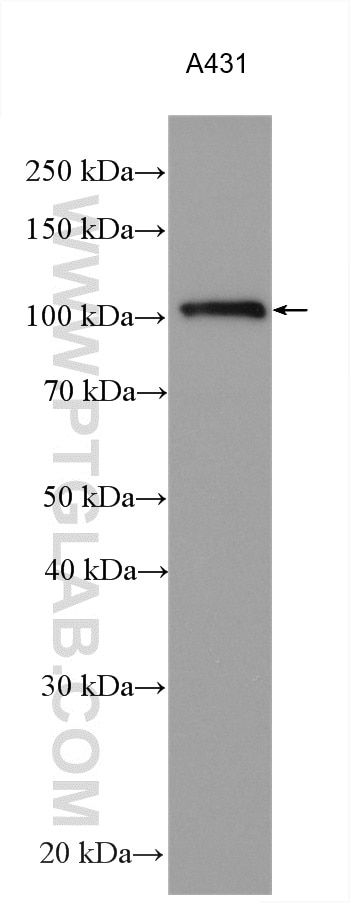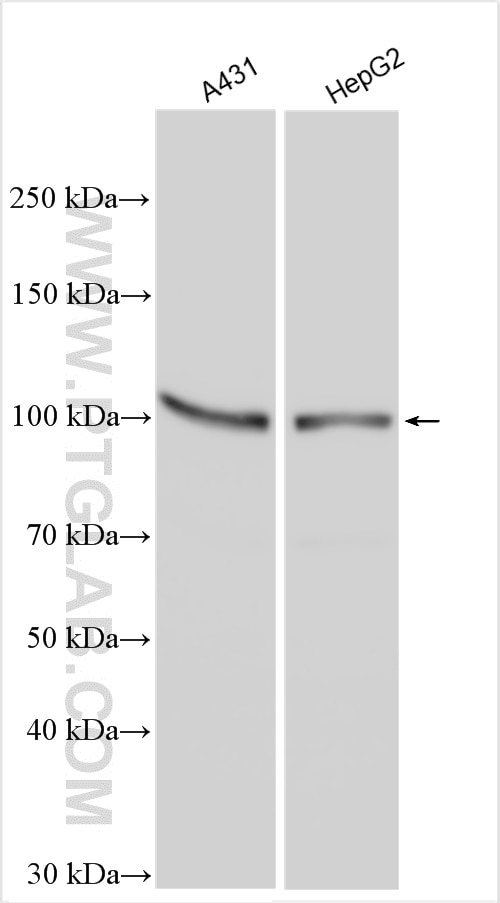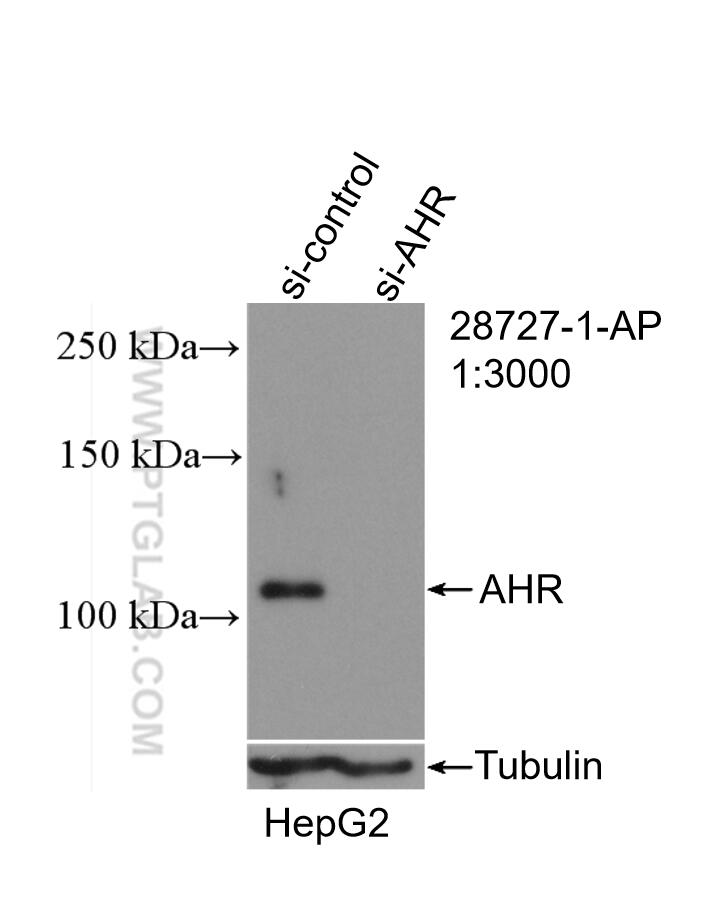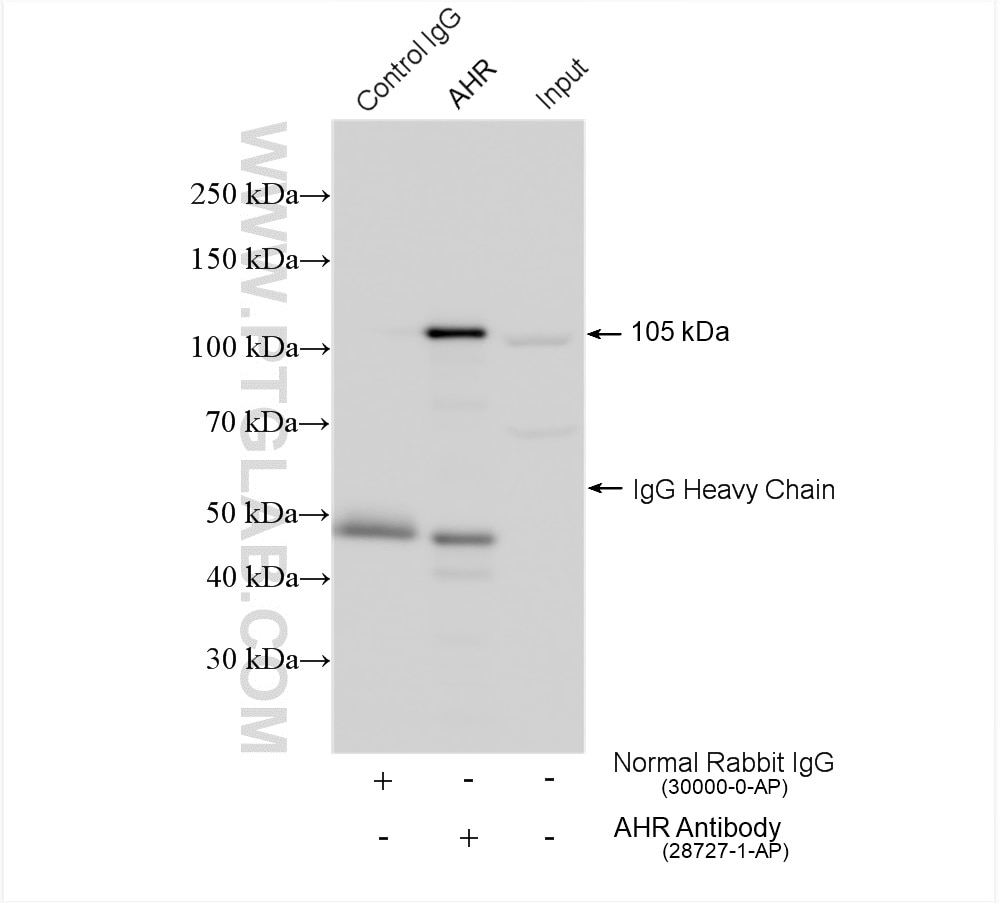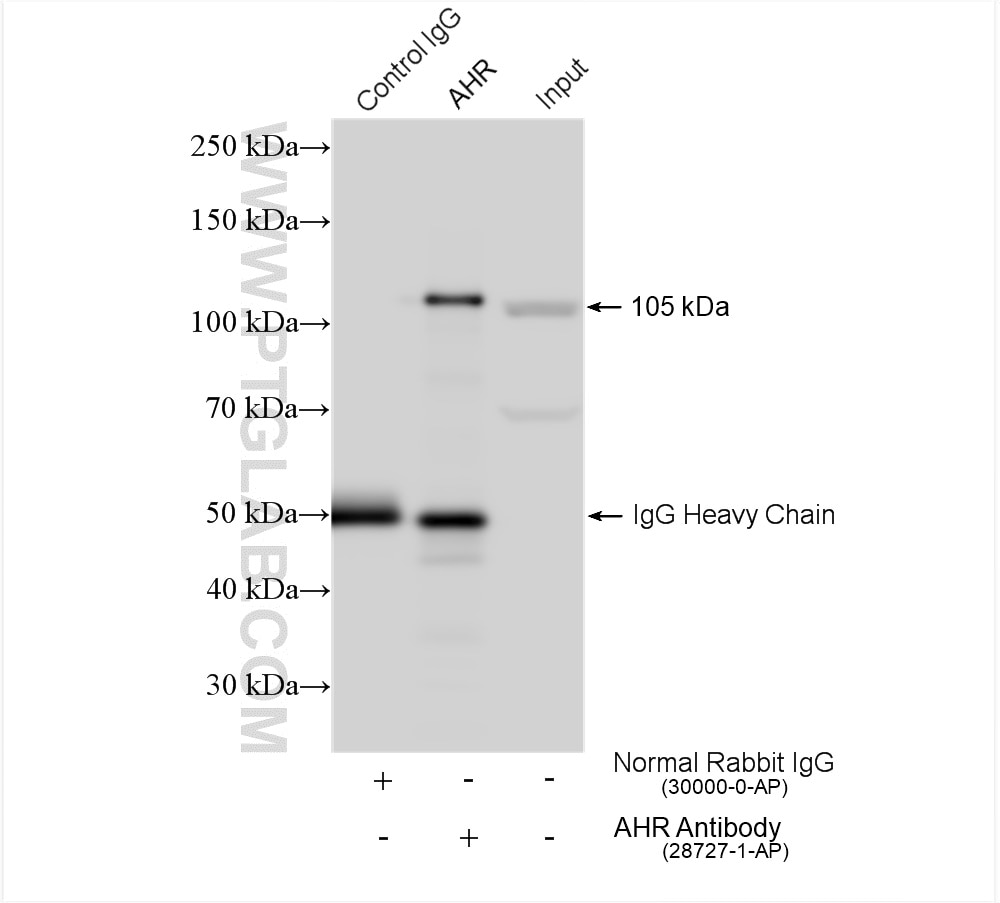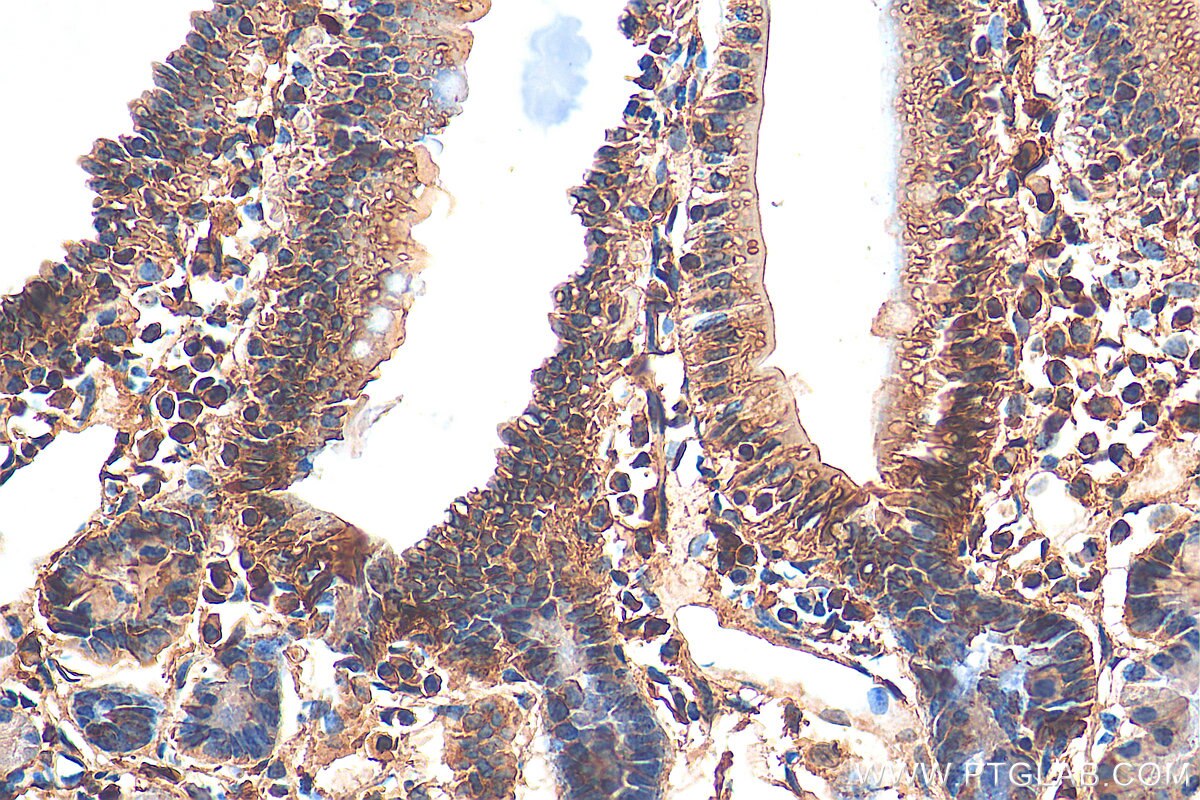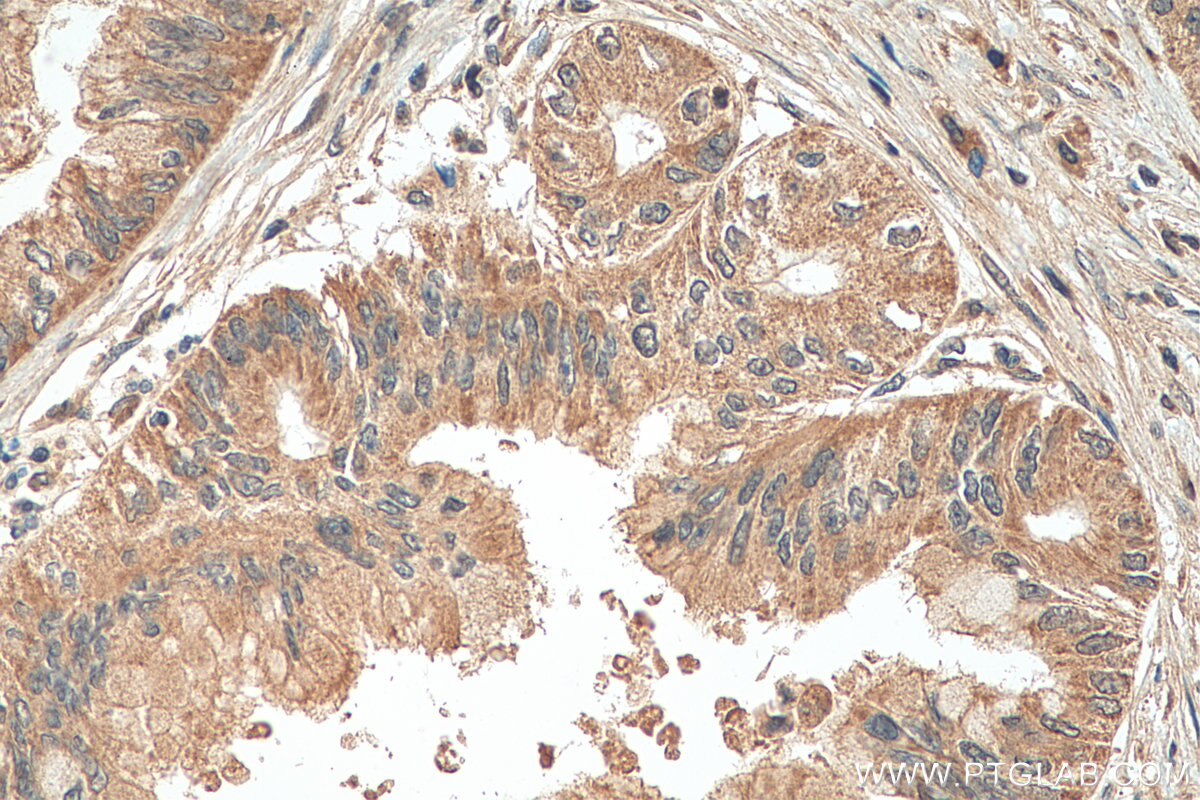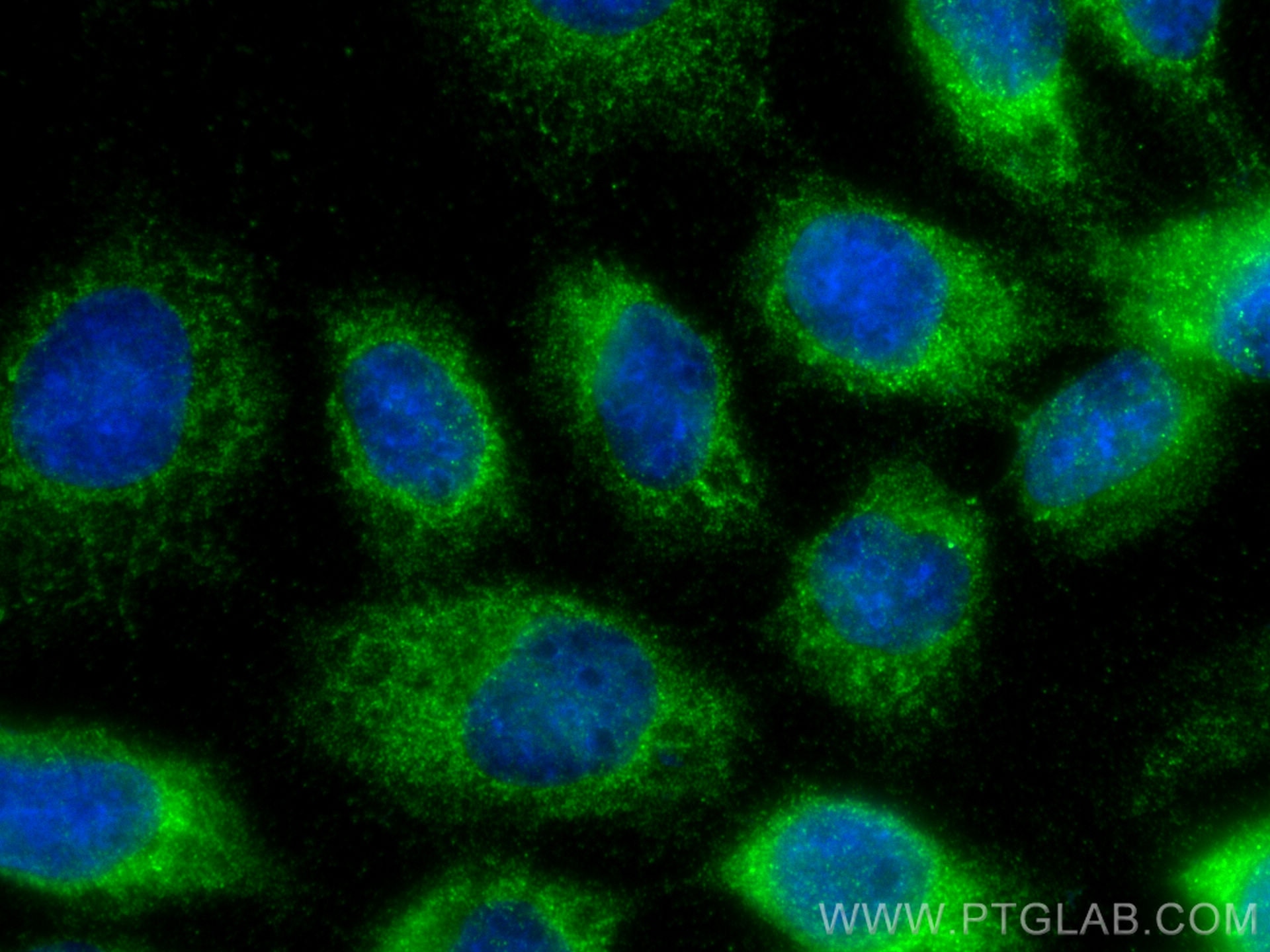- Featured Product
- KD/KO Validated
AHR Polyklonaler Antikörper
AHR Polyklonal Antikörper für WB, IHC, IF/ICC, IP, ELISA
Wirt / Isotyp
Kaninchen / IgG
Getestete Reaktivität
human, Maus und mehr (1)
Anwendung
WB, IHC, IF/ICC, IP, ChIP, ELISA
Konjugation
Unkonjugiert
Kat-Nr. : 28727-1-AP
Synonyme
Geprüfte Anwendungen
| Erfolgreiche Detektion in WB | A431-Zellen, HepG2-Zellen |
| Erfolgreiche IP | PC-3-Zellen, HepG2-Zellen |
| Erfolgreiche Detektion in IHC | Maus-Dünndarmgewebe, humanes Pankreaskarzinomgewebe Hinweis: Antigendemaskierung mit TE-Puffer pH 9,0 empfohlen. (*) Wahlweise kann die Antigendemaskierung auch mit Citratpuffer pH 6,0 erfolgen. |
| Erfolgreiche Detektion in IF/ICC | A431-Zellen |
Empfohlene Verdünnung
| Anwendung | Verdünnung |
|---|---|
| Western Blot (WB) | WB : 1:1000-1:3000 |
| Immunpräzipitation (IP) | IP : 0.5-4.0 ug for 1.0-3.0 mg of total protein lysate |
| Immunhistochemie (IHC) | IHC : 1:50-1:500 |
| Immunfluoreszenz (IF)/ICC | IF/ICC : 1:200-1:800 |
| It is recommended that this reagent should be titrated in each testing system to obtain optimal results. | |
| Sample-dependent, check data in validation data gallery | |
Veröffentlichte Anwendungen
| KD/KO | See 1 publications below |
| WB | See 25 publications below |
| IHC | See 4 publications below |
| IF | See 8 publications below |
| IP | See 3 publications below |
| ChIP | See 2 publications below |
Produktinformation
28727-1-AP bindet in WB, IHC, IF/ICC, IP, ChIP, ELISA AHR und zeigt Reaktivität mit human, Maus
| Getestete Reaktivität | human, Maus |
| In Publikationen genannte Reaktivität | human, Maus, Ratte |
| Wirt / Isotyp | Kaninchen / IgG |
| Klonalität | Polyklonal |
| Typ | Antikörper |
| Immunogen | AHR fusion protein Ag28935 |
| Vollständiger Name | aryl hydrocarbon receptor |
| Berechnetes Molekulargewicht | 848 aa, 96 kDa |
| Beobachtetes Molekulargewicht | 105-110 kDa |
| GenBank-Zugangsnummer | BC070080 |
| Gene symbol | AHR |
| Gene ID (NCBI) | 196 |
| Konjugation | Unkonjugiert |
| Form | Liquid |
| Reinigungsmethode | Antigen-Affinitätsreinigung |
| Lagerungspuffer | PBS with 0.02% sodium azide and 50% glycerol |
| Lagerungsbedingungen | Bei -20°C lagern. Nach dem Versand ein Jahr lang stabil Aliquotieren ist bei -20oC Lagerung nicht notwendig. 20ul Größen enthalten 0,1% BSA. |
Hintergrundinformationen
The aryl hydrocarbon receptor (AhR) is a ligand-activated transcription factor that has been largely regarded as a mediator of xenobiotic metabolism [PMID:18483242]. It plays a part role in physiologic activities, including attenuation of the acute phase response, cytokine signaling, T helper (TH)17 immune cell differentiation, modulation of NF-κB activity, and regulation of hormonal signaling [PMID:20423157,18540824]. It also mediates transcription factor sequestering away from a gene promoter or tethering of the AhR to a transcription factor on a promoter. AHR calculated molecular masses differ by <10%, compared with the apparent molecular masses predicted from SDS-PAGE for the two receptors (105 and 95 kDa, respectively). (PMID: 8246913)
Protokolle
| PRODUKTSPEZIFISCHE PROTOKOLLE | |
|---|---|
| WB protocol for AHR antibody 28727-1-AP | Protokoll herunterladen |
| IHC protocol for AHR antibody 28727-1-AP | Protokoll herunterladenl |
| IF protocol for AHR antibody 28727-1-AP | Protokoll herunterladen |
| IP protocol for AHR antibody 28727-1-AP | Protokoll herunterladen |
| STANDARD-PROTOKOLLE | |
|---|---|
| Klicken Sie hier, um unsere Standardprotokolle anzuzeigen |
Publikationen
| Species | Application | Title |
|---|---|---|
Biomaterials Biomimetic nanoplatform with microbiome modulation and antioxidant functions ameliorating insulin resistance and pancreatic β-cell dysfunction for T2DM management | ||
NPJ Regen Med Aryl hydrocarbon receptor regulates IL-22 receptor expression on thymic epithelial cell and accelerates thymus regeneration | ||
Cell Death Discov IDO1 inhibits ferroptosis by regulating FTO-mediated m6A methylation and SLC7A11 mRNA stability during glioblastoma progression | ||
J Agric Food Chem Fructo-oligosaccharides Alleviated Ulcerative Colitis via Gut Microbiota-Dependent Tryptophan Metabolism in Association with Aromatic Hydrocarbon Receptor Activation in Mice | ||
Eur J Med Res Potential 'anti-cancer' effects of esketamine on proliferation, apoptosis, migration and invasion in esophageal squamous carcinoma cells | ||
Int Immunopharmacol Paeoniflorin-6'-o-benzene sulfonate ameliorates the progression of adjuvant-induced arthritis by inhibiting the interaction between Ahr and GRK2 of fibroblast-like synoviocytes. |
